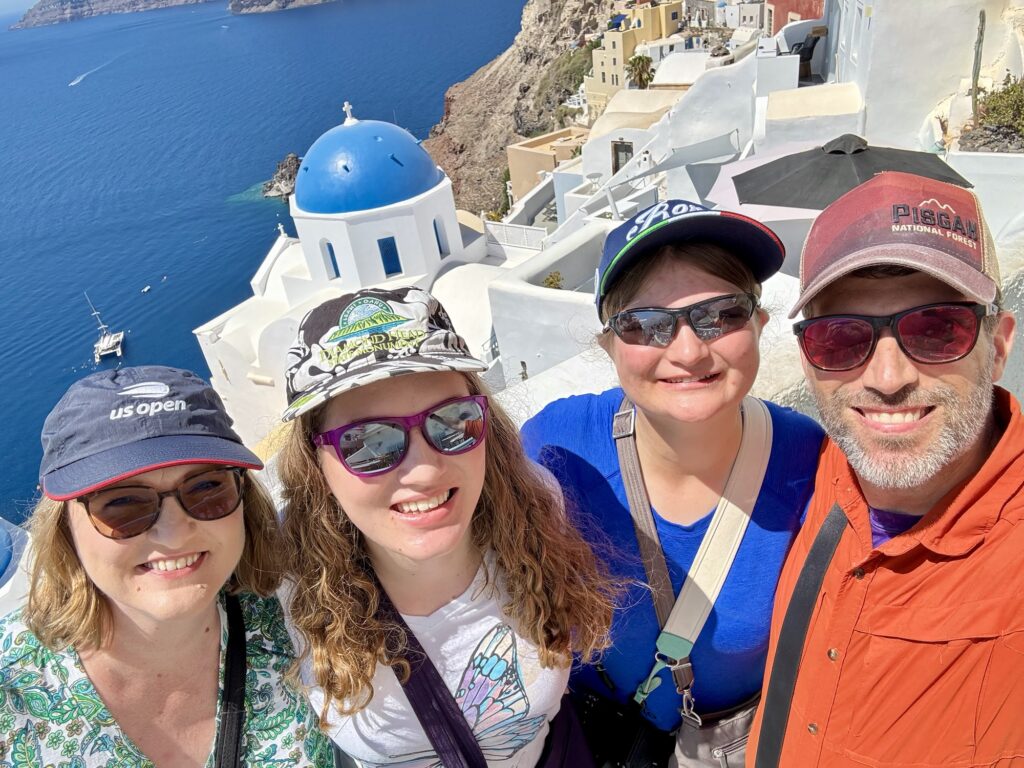
It was another very early morning for day 9, with our alarms set before 6am for our arrival to the Greek islands of Santorini on the Aegean Sea. This was the first time in Greece for all of us!
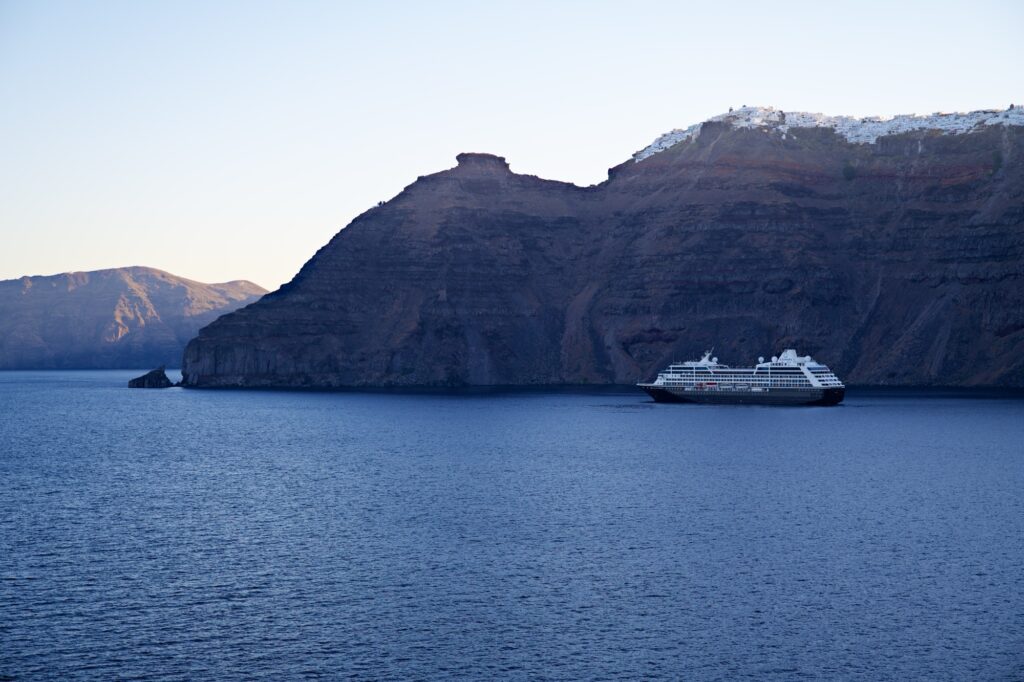
As we awoke, I stepped out on the balcony to take some shots of the beautiful cliffs of Santorini with towns nestled up on top. We later learned these were the cities of Oia and Fira.
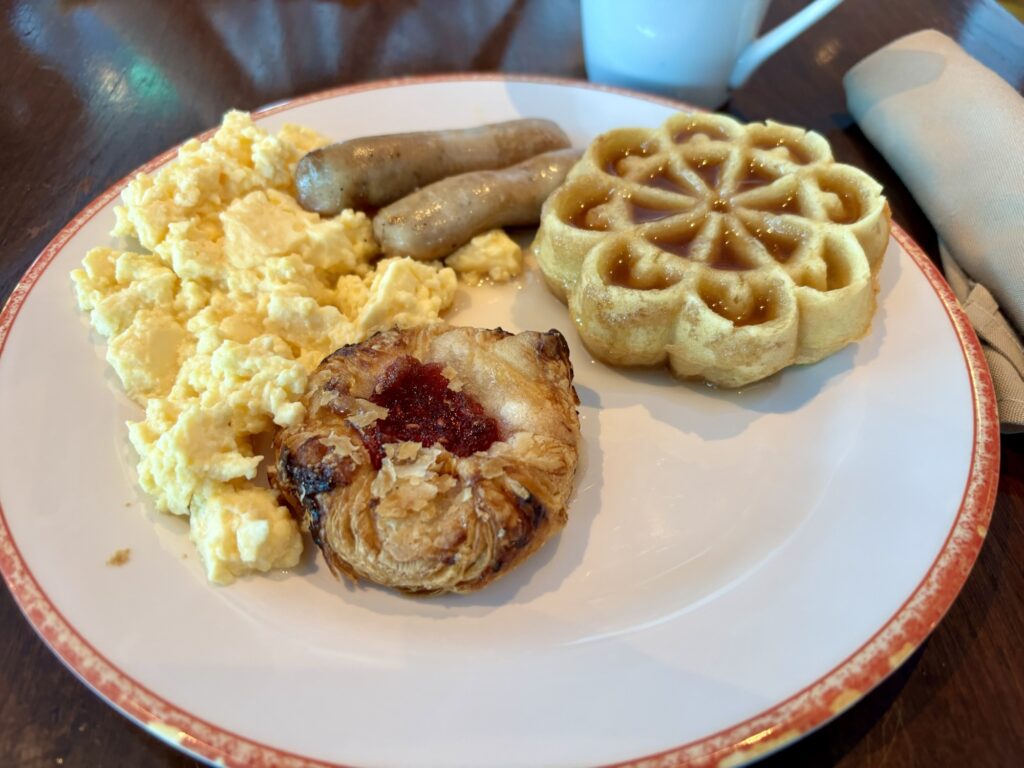
Since our meetup time was before the Main Dining Room opened, we again had a nice breakfast at the Windjammer Marketplace buffet.
Our tour group met at 7:15 AM on deck 4 in Studio B, which is the onboard ice rink. We were assigned to group 10 for our History of Santorini tour. After waiting for about 20 minutes, they called our number and we headed down to deck one to disembark.
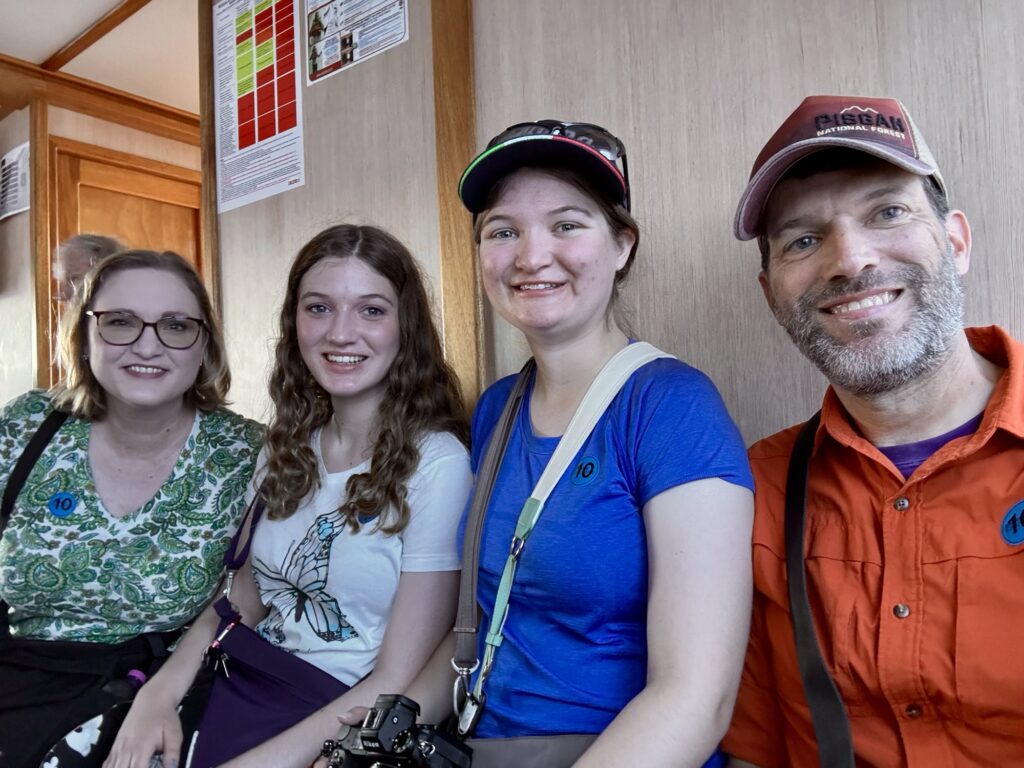
The port in Santorini is not large enough for cruise ships, so we took a tender to the Athenios port, which is the only one of the two ports in Santorini that is accessible by bus or car. The other port is outside Fira, and is only accessible via climbing 588 steps, cable car, or donkey.
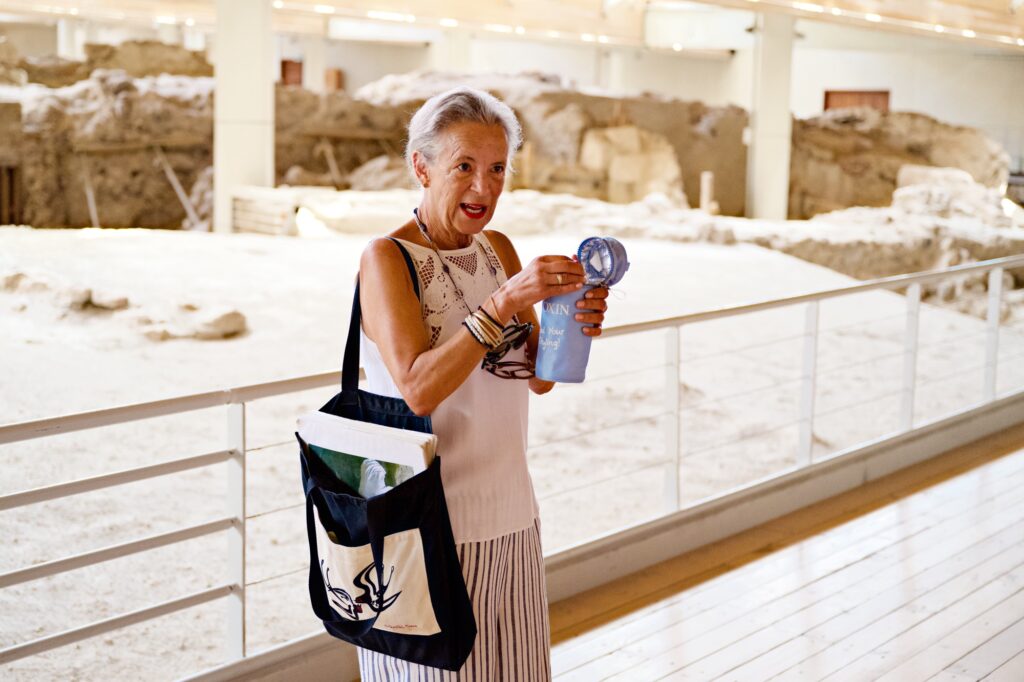
Upon arrival, we met our guide Georgina and our driver Cristo as we boarded the bus at the port. Georgina explained that Santorini is made up of five islands that were formed by volcanic eruptions. These islands form a circle with a small opening. The volcanic crater is mostly under water in the center of the circle and is referred to as the caldera. She described it as being like a cauldron. Our cruise ship was anchored in the caldera with one other cruise ship today.

The largest island of the five has an ancient name of Thera but now it is simply referred to as Santorini. This is the island where we toured today. From the port to the top of the cliffs of Thera we traveled on a steep, two-lane road with seven hairpin turns. Our driver Cristo did an amazing job navigating all day long.
We learned that Santorini is 74 square kilometers in size and has 15,000 inhabitants that increases greatly with tourists. The Islands have a rainy season that lasts from October to March and a dry season from April to September. They receive an average of 12 inches of rain per year in the rainy season.
Georgina sad that the reason why the cliffs have so many visible layers was because of all the volcanic activity over the millennia. She described it as a geological museum. The majority of the rock on the islands pumice, which is gas filled lava rock.
She said that the last eruption of the volcano that made the islands was in 1950, and that historically there has been an eruption every 60 years or so. This means they are overdue!
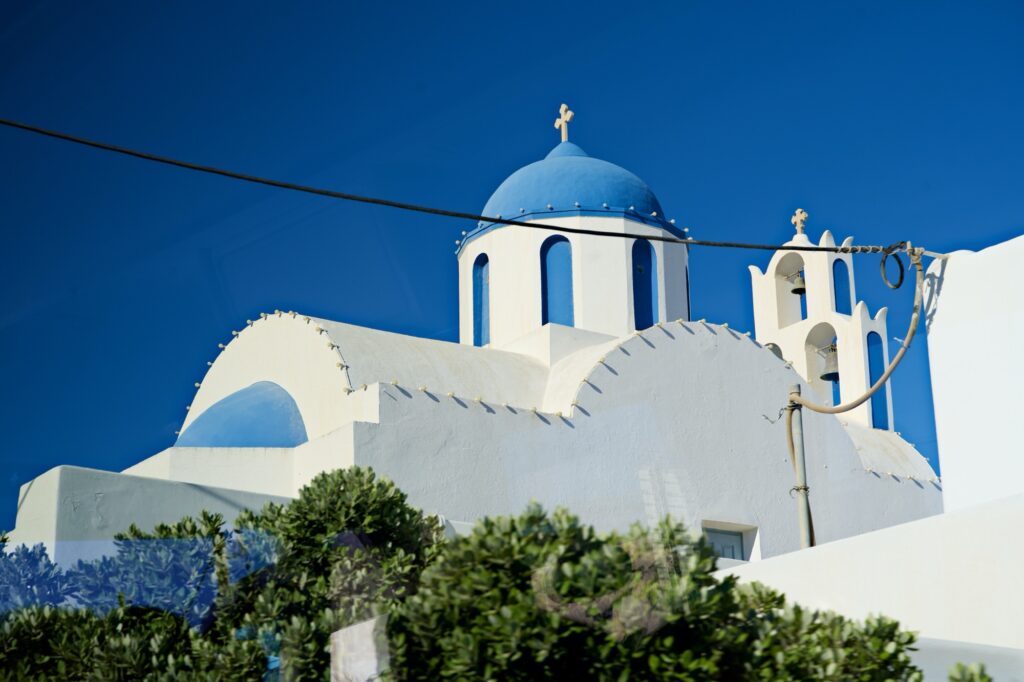
At the top of the cliffs we saw our first blue dome that Santorini is famous for. Georgina explained that all of the blue domed structures are Greek Orthodox church buildings, and there are 400 on Santorini. They are toped with domes instead of steeples or towers due to the frequent earthquakes on Santorini. She said that they are blue to represent the water and the sky. There are also a few churches with white domes. Many of these church buildings are privately owned and are only open for special occasions. Georgina later said that most of the buildings in Santorini were white to help protect from the heat.
We were told that the name Santorini comes from Saint Irene, the patron saint of the island. Georgina said that this name was derived from a church building dedicated to Saint Irene that no longer exists on the Island.
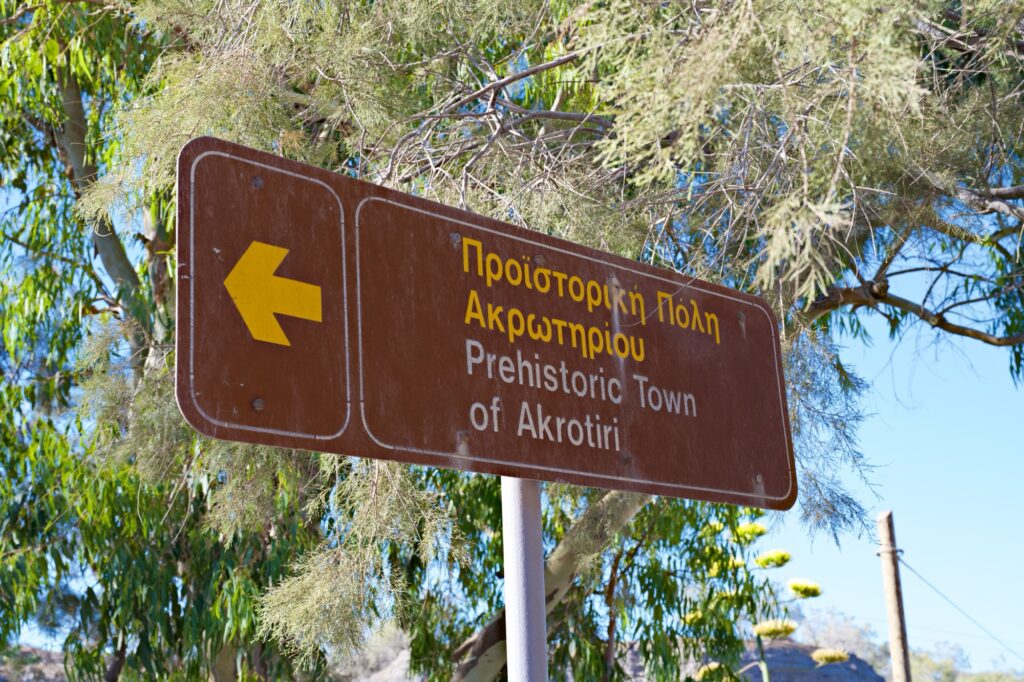
Our first stop of the day was the prehistoric town of Akrotiri, which is referred to as the Pompeii of the Aegean. There are also some who think this might be the legendary city of Atlantis. Georgina said that she doubted it. Akrotiri was a Minoan city that dates back thousands of years. The Minoans were the first advanced European civilization.

The ruins of Akrotiri are covered with a roof that took seven years to build (2005 to 2012) and cost 40 million Euros. Prior to the roof and sidewalk system, the public was just allowed to walk through the ruins. The site was shut down for visitors and excavations while the roof was built, when it reopened in 2012, excavations did not resume because of a financial crisis in Greece. This lasted until 2016 when the Russian billionaire Kaspersky donated to fund further excavations. In 2023, he was prohibited from continuing to donate by the Russian government since Greece had supported Ukraine in the war. Excavations have stalled ever since.
Initial excavations at Akroriti were begun in 1967 by Professor Spyridon Marinatos, but the first evidence of the existence of this town came as Egypt was mining pozzuolana in 1867 for the construction the Suez Canal.
Akrotiri was destroyed in 1614 BC by a major volcanic eruption believed to have been responsible for the formation of the caldera. Like Pompeii, the covering of Akrotiri by ash and rock has preserved the site extremely well. However, unlike Pompeii, no human remains have been found. This means they must have abandoned the city before the eruption.
Excavations have uncovered 35 buildings and all of them are two and three levels high. Some of these buildings even had indoor plumbing In many cases they have only uncovered the top levels. We spent about an hour in Akrotiri, and here are some of the highlights.
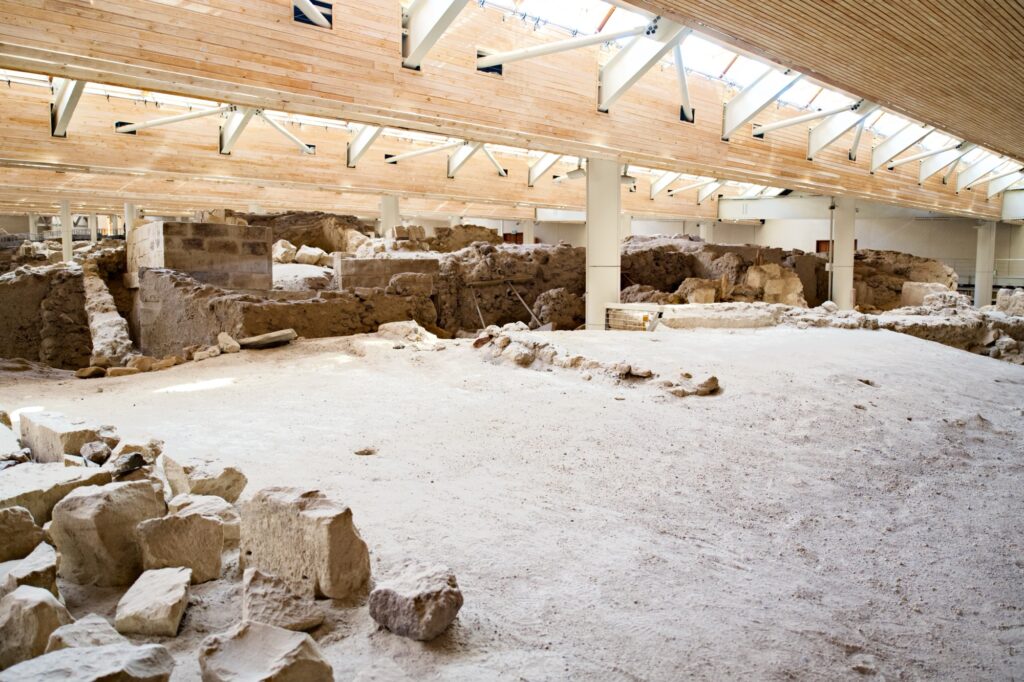
We first came to a three level limestone building believed to have been for public or administrative use due the contents found.

As we walked around this building, Georgina pointed out a hole beside the building that showed how deep it went. Only the top level is visible and the first two are still covered in pumice. Georgina also told us that in Akrotiri houses were constructed from volcanic rock and buildings from limestone.
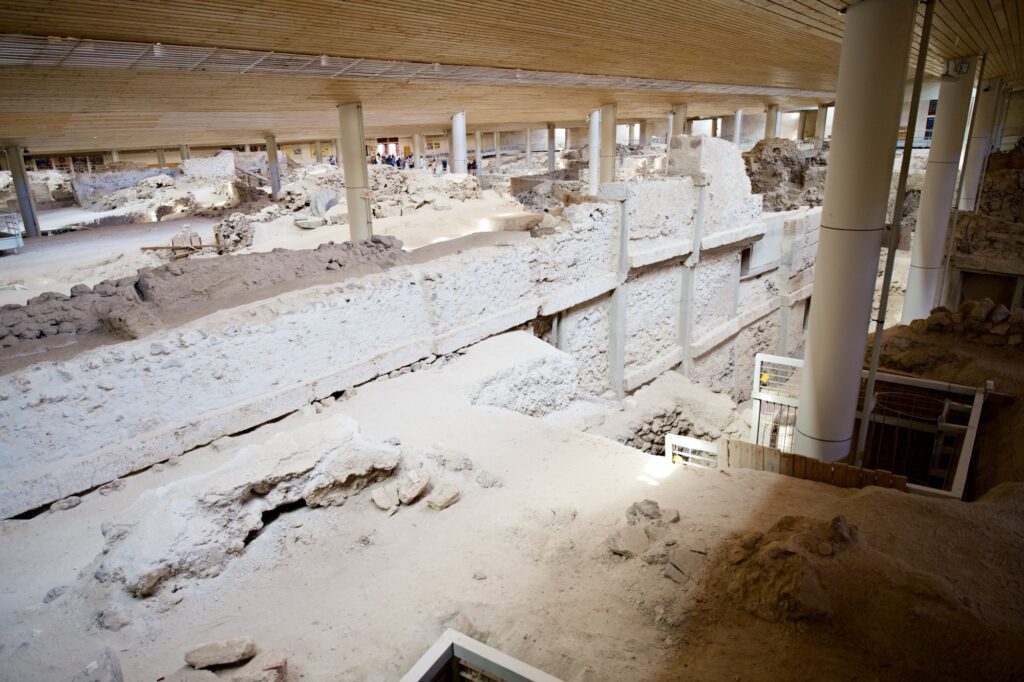
Akrotiri was built with lots of wood that was destroyed by the eruption. As structures are excavated, cement is inserted in place of the missing wood to keep the buildings intact.
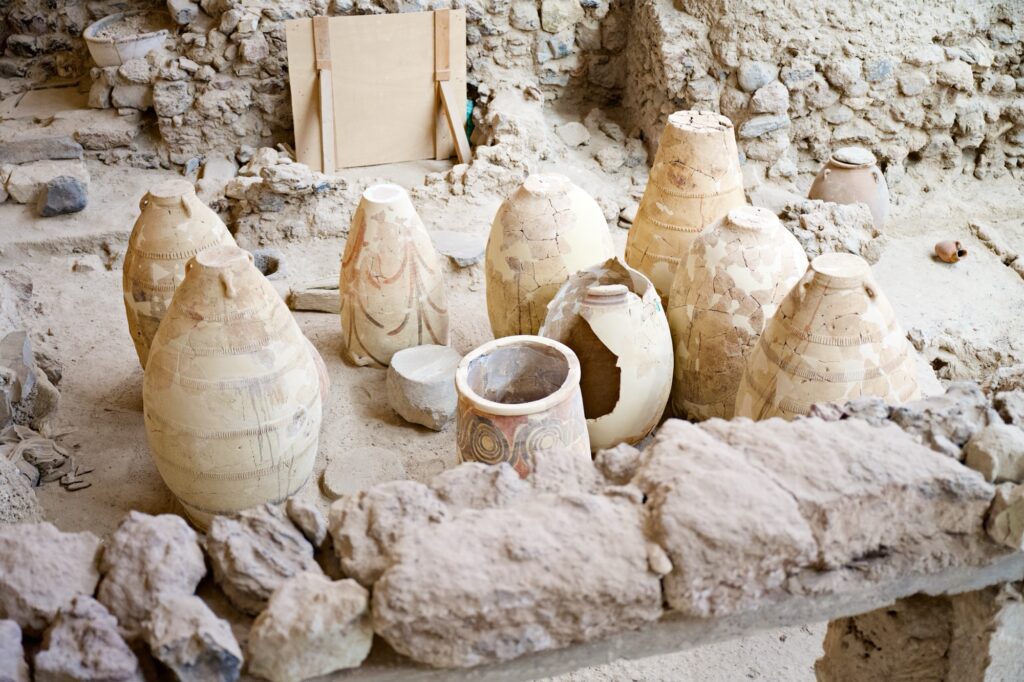
Further into the site we saw a number of original clay jars. Georgina said that some the excavated jars still contained carbonized food.
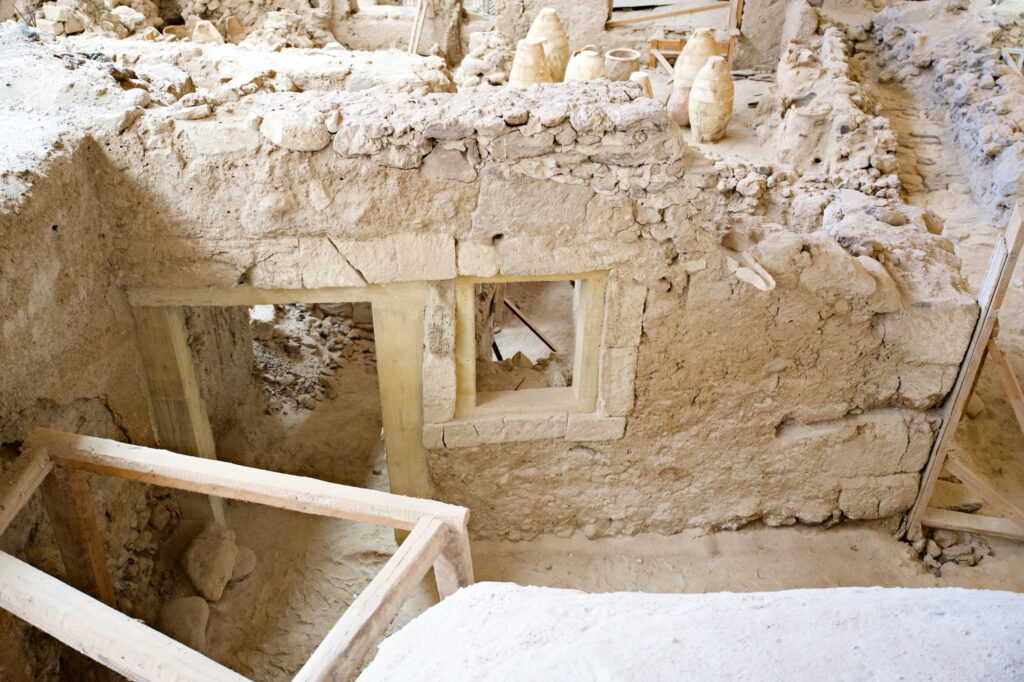
We saw a house with a water spout on the roof for collecting rainwater.
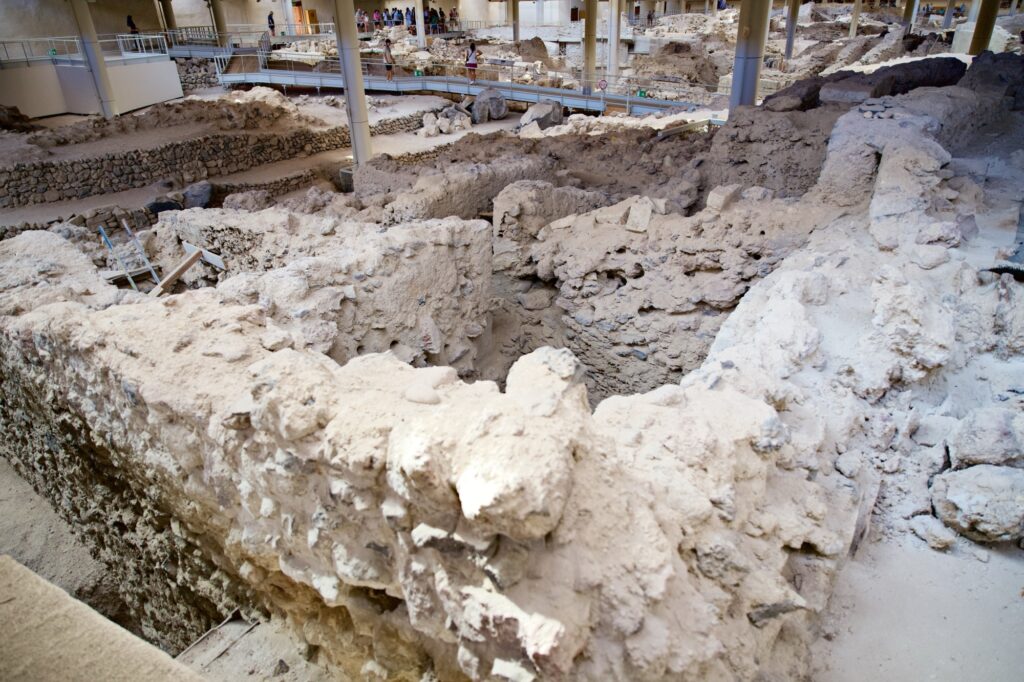
There was an excavated house known as the House of Ladies due to the paintings of women found on the walls. We saw some of the paintings later at the museum in Fira.
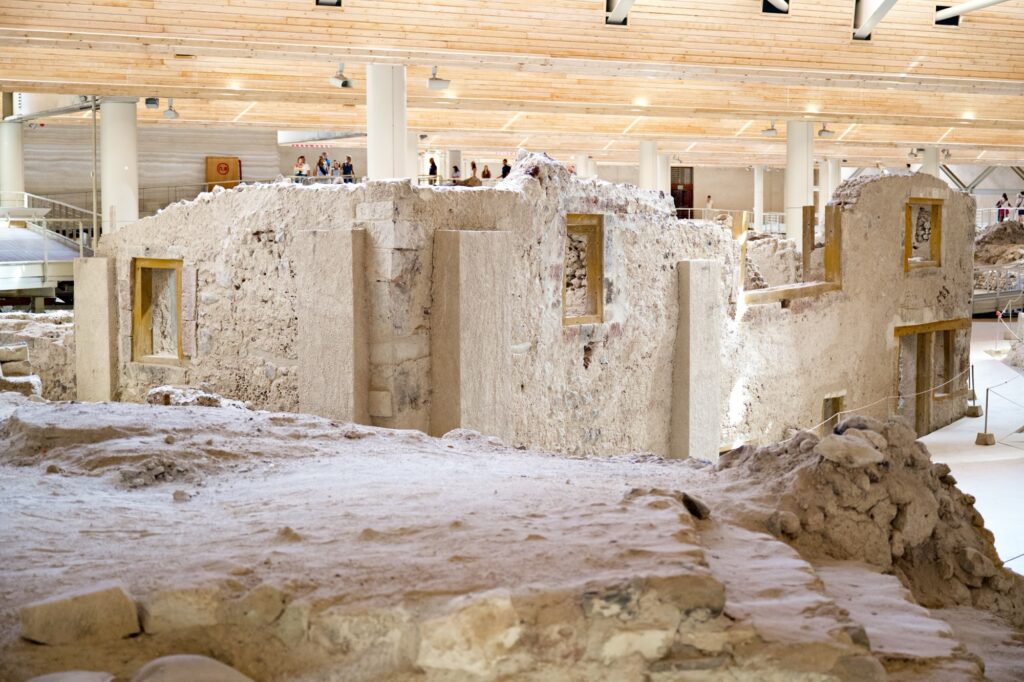
My favorite house at Akrotiri is known as West House. This was a very large house with a built in toilet.
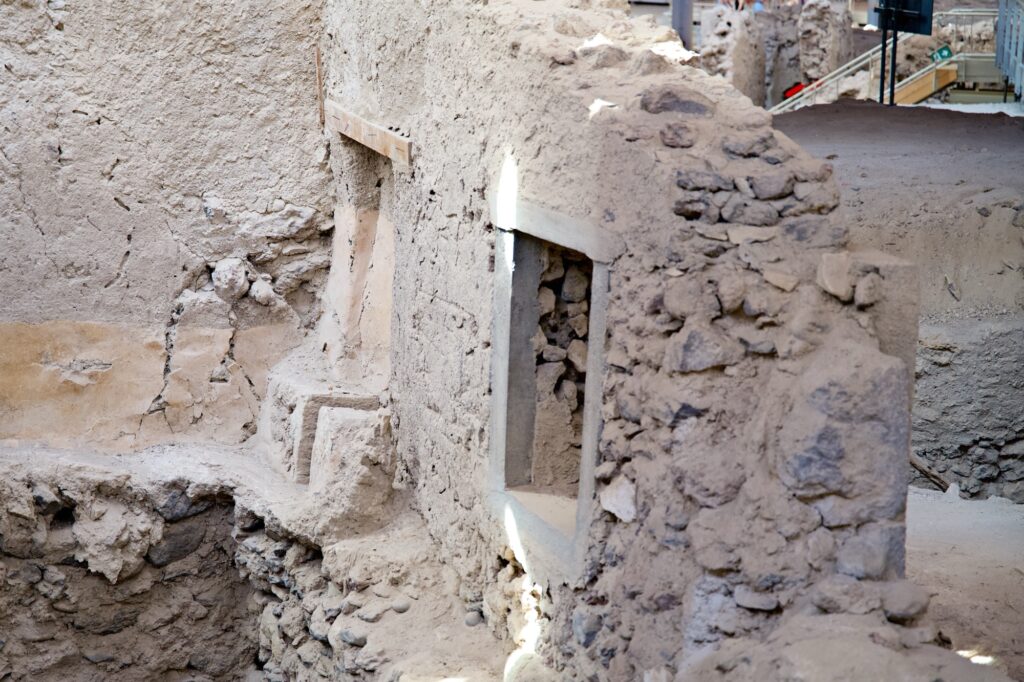
Probably the home of a very wealthy family. This house also had lots of painted walls that we saw later at the museum.
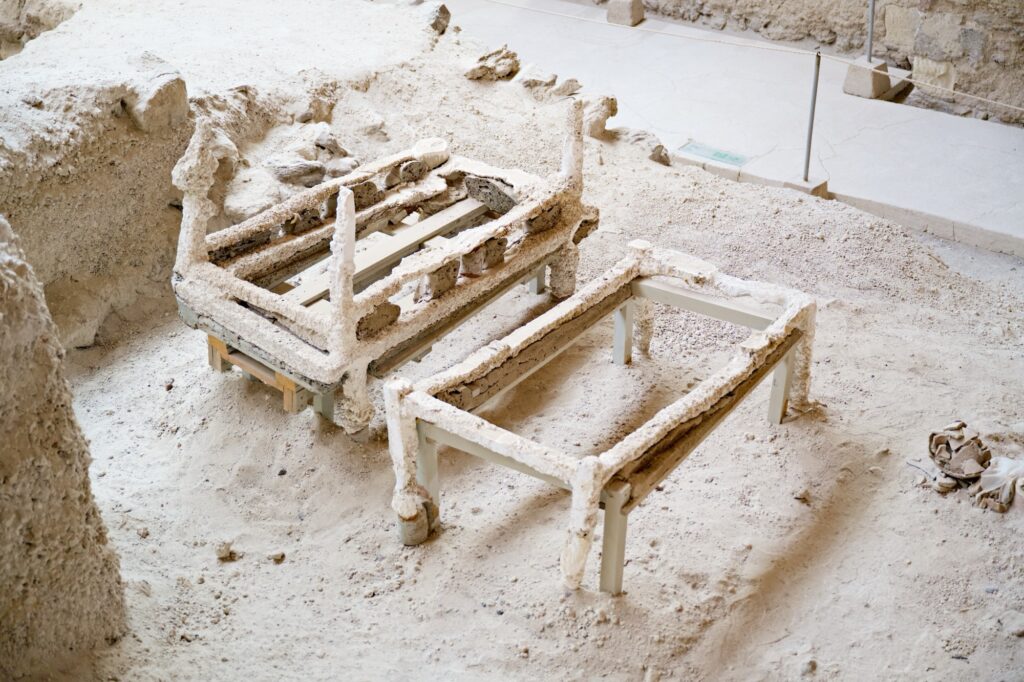
Just like in Pompeii, plaster was used to fill in the hollow areas where organic materials had been. We saw several bed frames throughout the site.
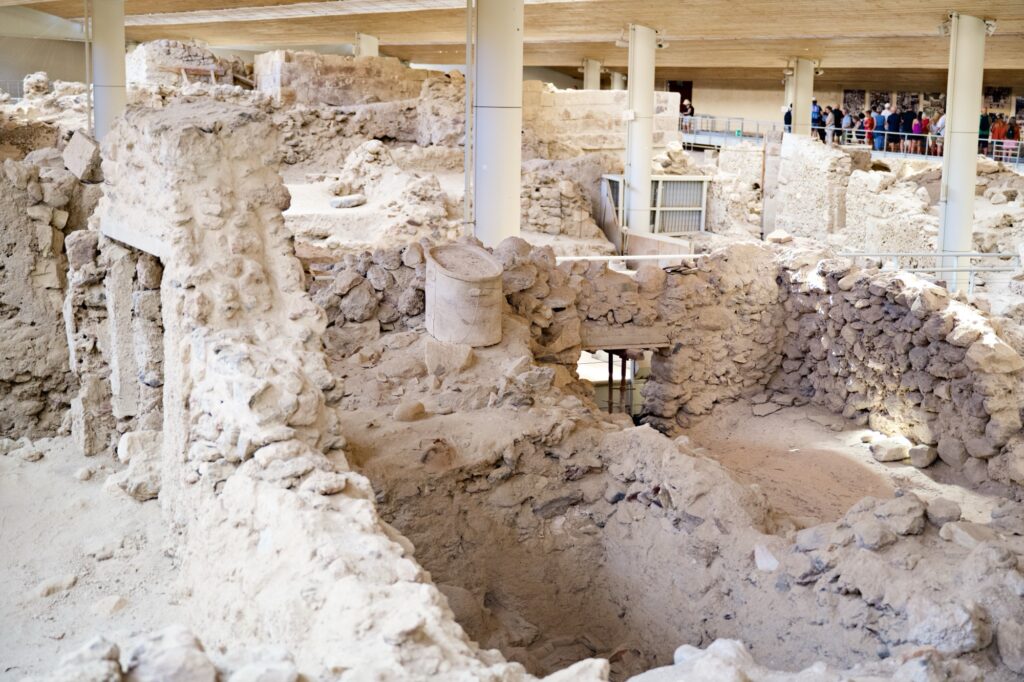
We also saw a building with a bathtub.
Akrotiri is incredible, and similar to Pompeii. However, we all thought that the preservation and presentation of the original materials was much better than in Pompeii.
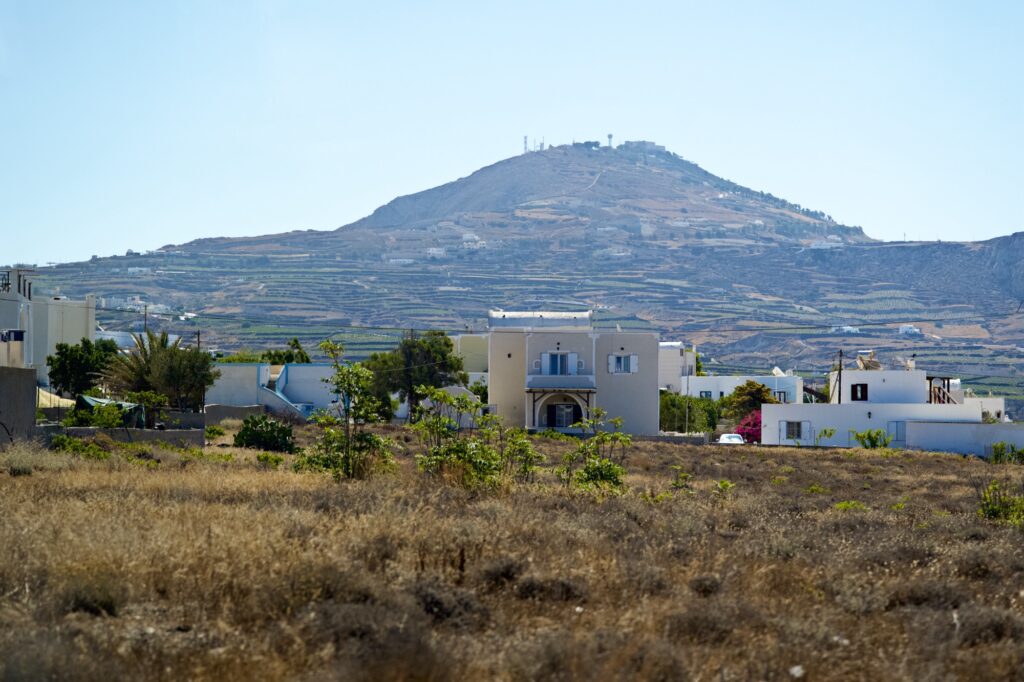
As we left Akrotiri, we had great views of the Mount of the Prophet Elijah, which is the only maintain on the island and is 1800 feet tall. There is a monastery on the top that was built in 1711 and is dedicated to the prophet Elijah.
As we drove, Georgina explained that there is a severe shortage of water in Santorini due to a lack of sources. They depend on desalinated sea water or rainwater. No crops are watered on Santorini due to this shortage. She said that 75% of the agriculture is grape vines and they also have cherry tomatoes.
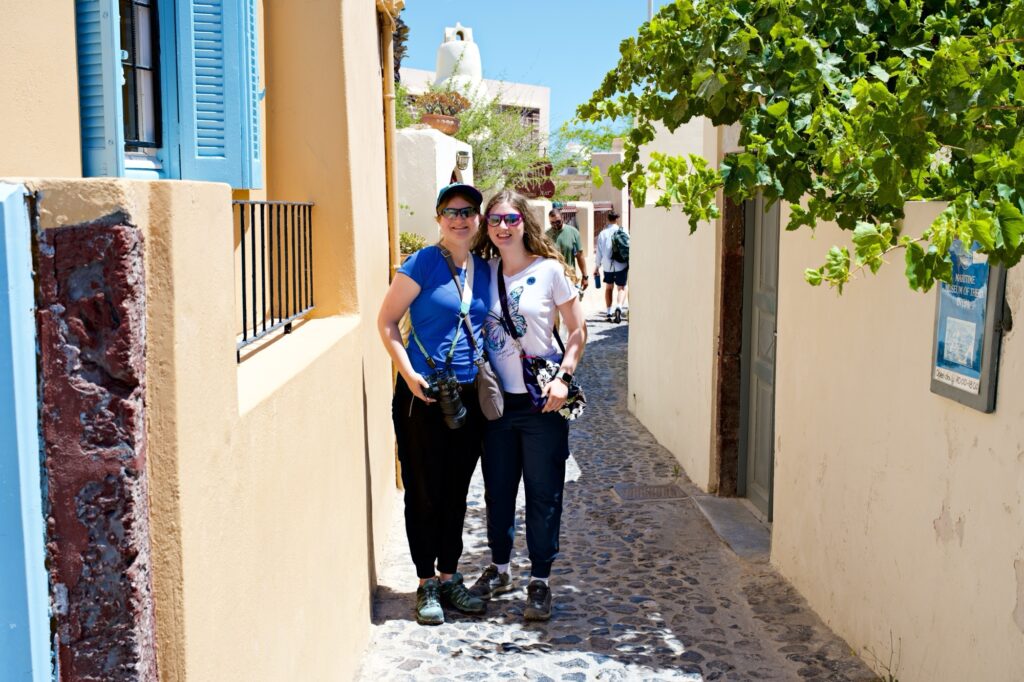
Our next stop was in the beautiful town of Oia. Some members our group went to the Maritime Museum, but we decided to explore the town on our own.
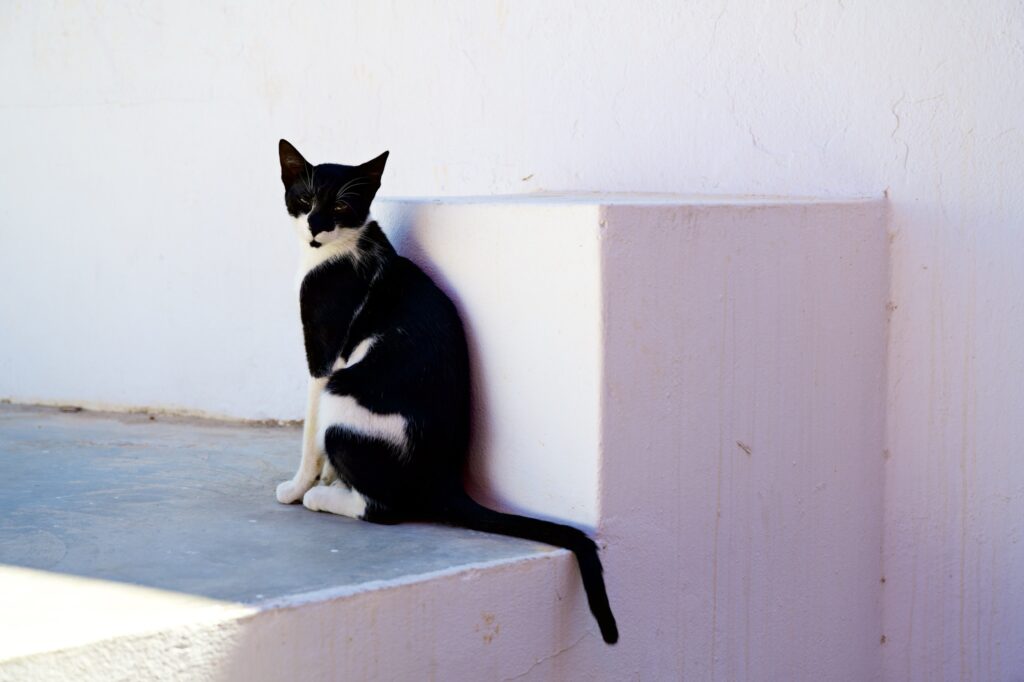
On a side note, we did see a couple of feral cats through the streets of Oia.
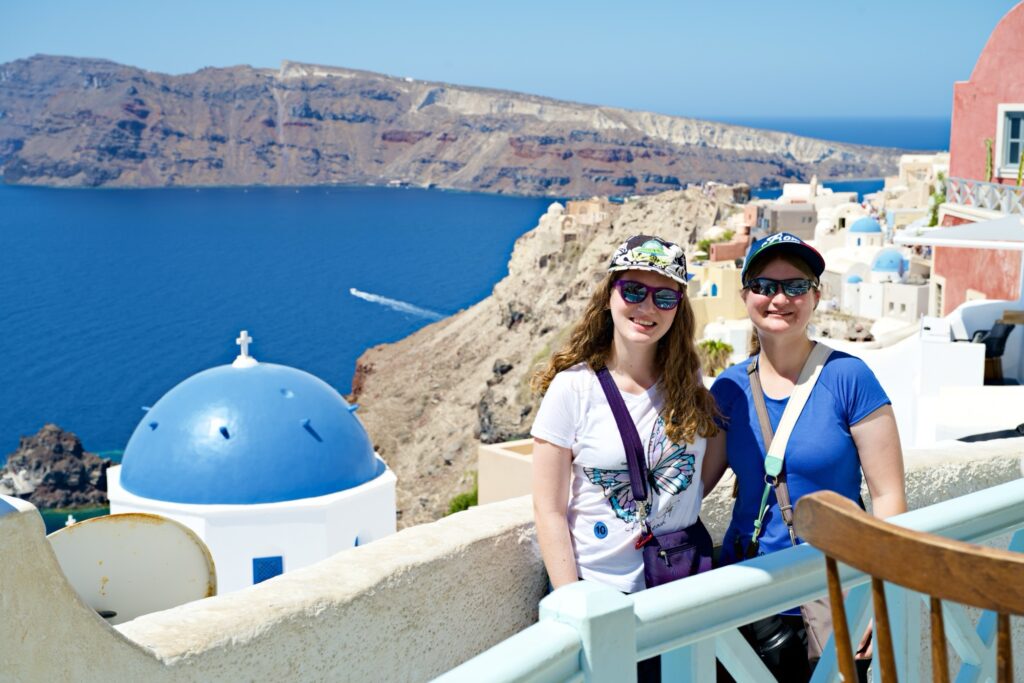
The streets of Oia are narrow and like a maze. We walked a bit and then found a good spot to take some pictures with the blue domed church buildings overlooking the caldera side of the island.
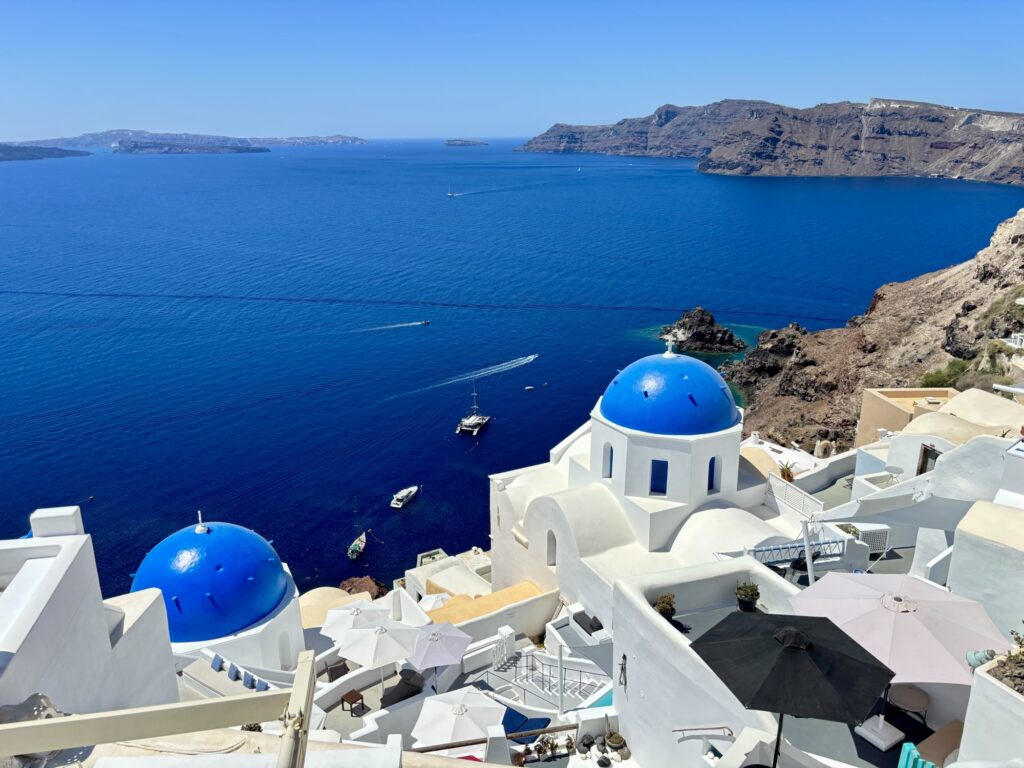
After pictures, we stopped at a restaurant called Melenio for lunch. This restaurant had a terrace overlooking the caldera and the views were stunning.

We each had a Greek pie made of philo dough with different fillings. Olivia and Kate had cheese, Sara had hame and cheese, and I had chicken. It was delicious.
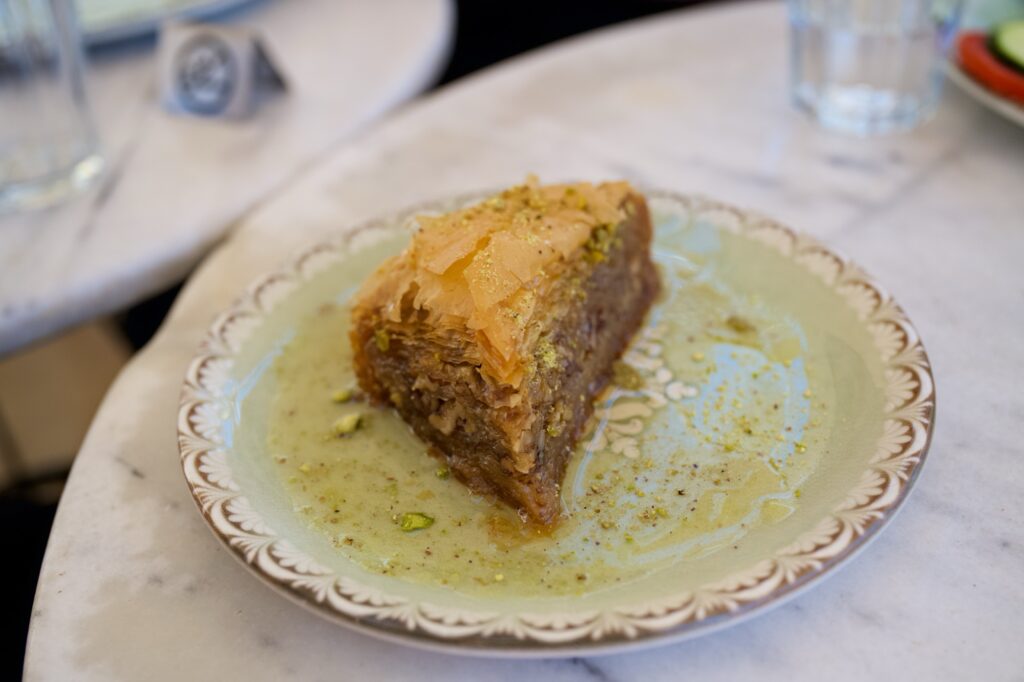
For desert we had a piece of baklava and a piece of ekmek. The ekmek was good, and the baklava was incredible. Absolutely the best baklava I’ve ever had!

From there we headed to the bus for the drive to the main town of Fira. Fira began in the 1800s and today has 3,000 residents. It is the financial and cultural center of Santorini. Once we arrived in Fira, we walked to the Museum of Prehistoric Thera to see artifacts that had been recovered from Akrotiri.
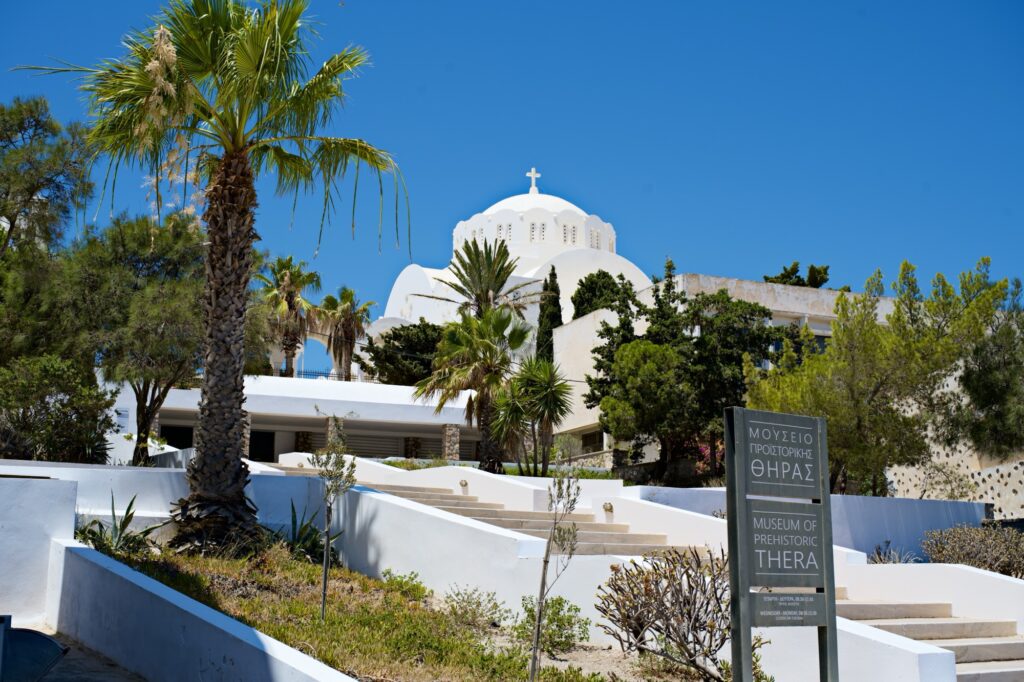
This museum was built in the year 2000 and contains over 12,000 items from Akrotiri.
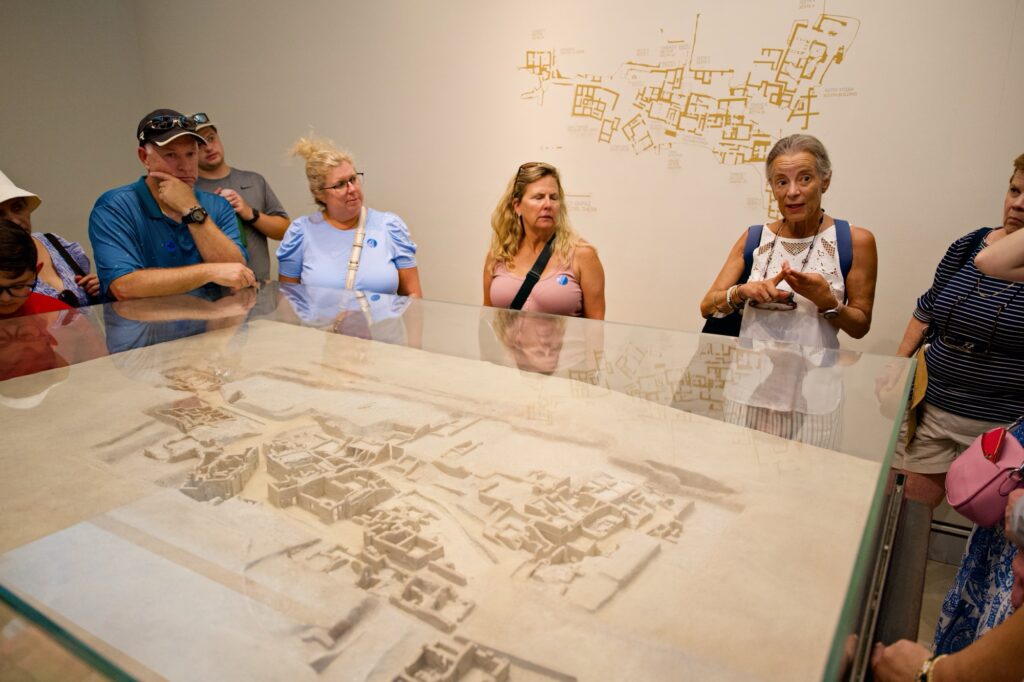
Georgina started our tour of the museum by looking at a model of the ruins we have visited earlier in the day. This helped give context to the overall site.
From there, we began to explore various artifacts recovered from Akrotiri, and here are a few of the highlights:
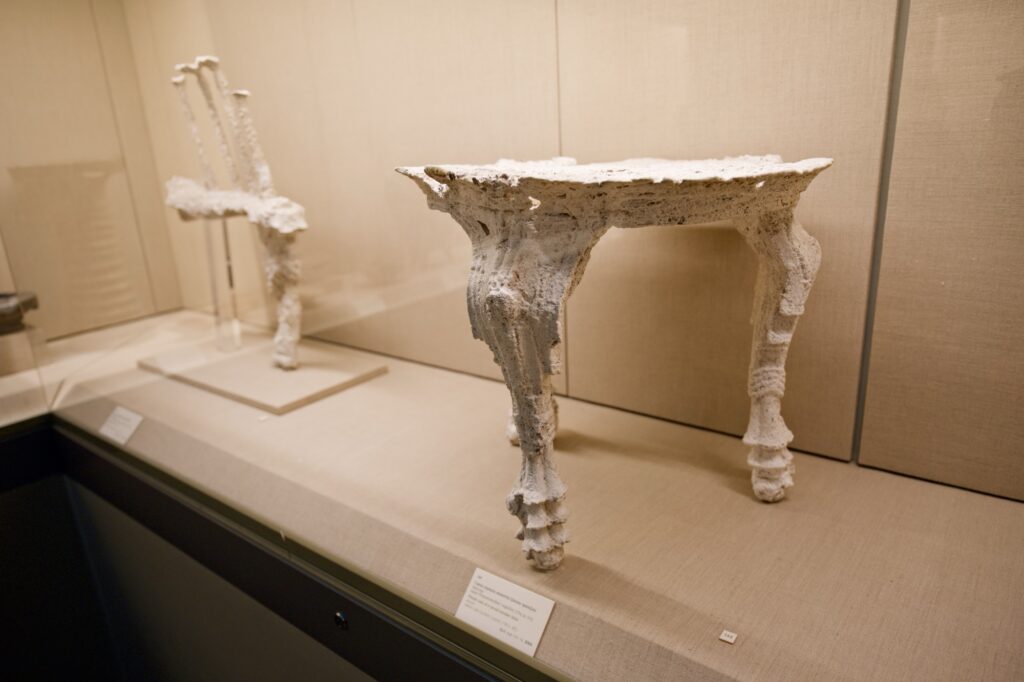
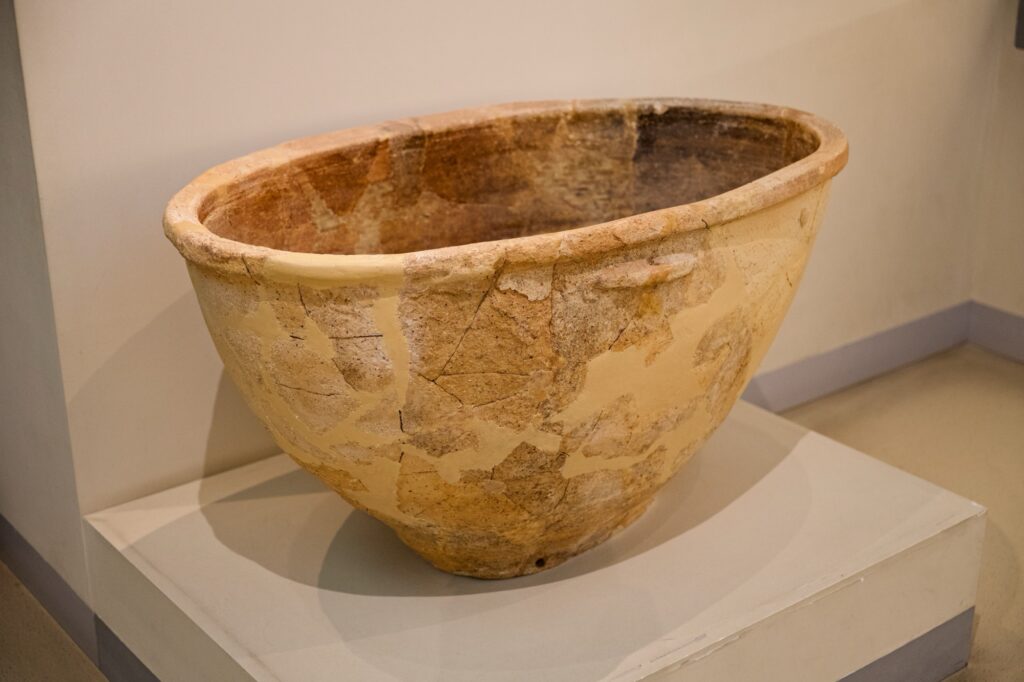
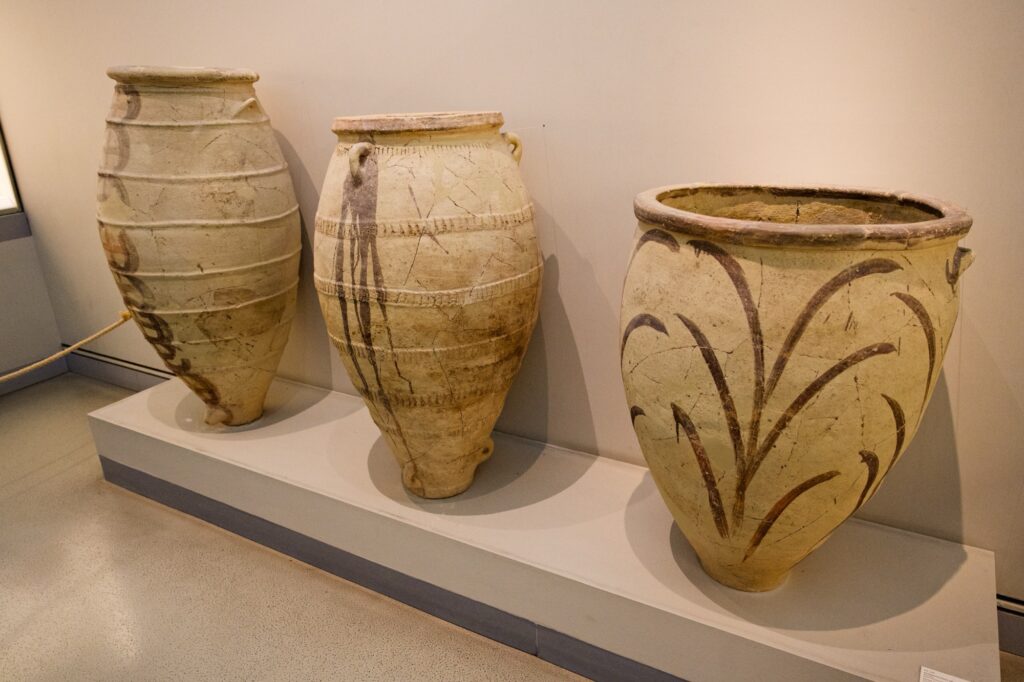
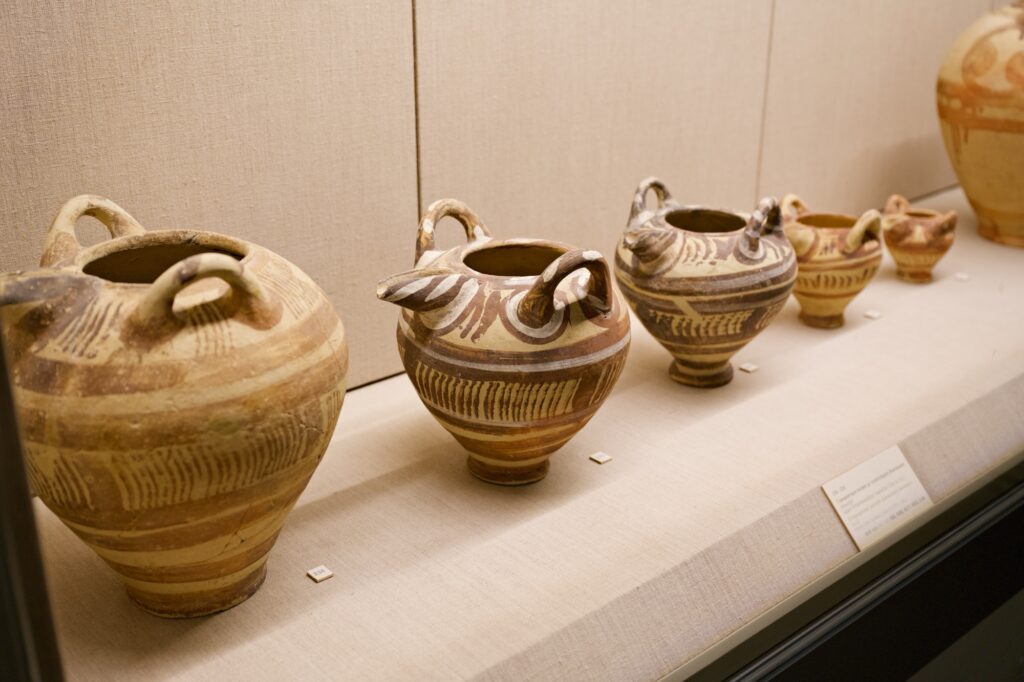
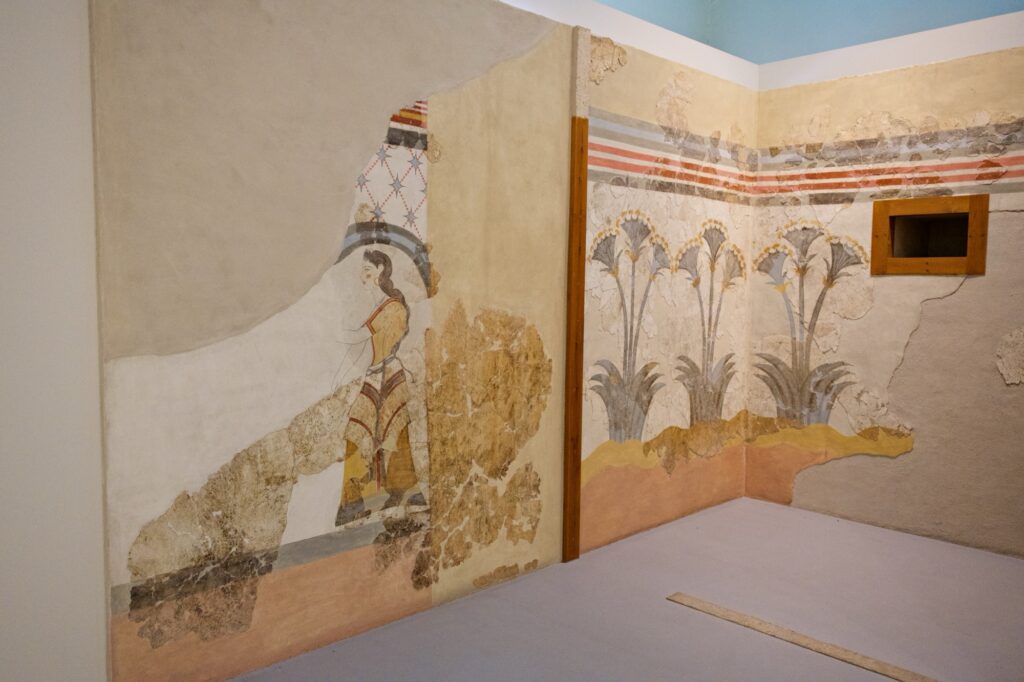
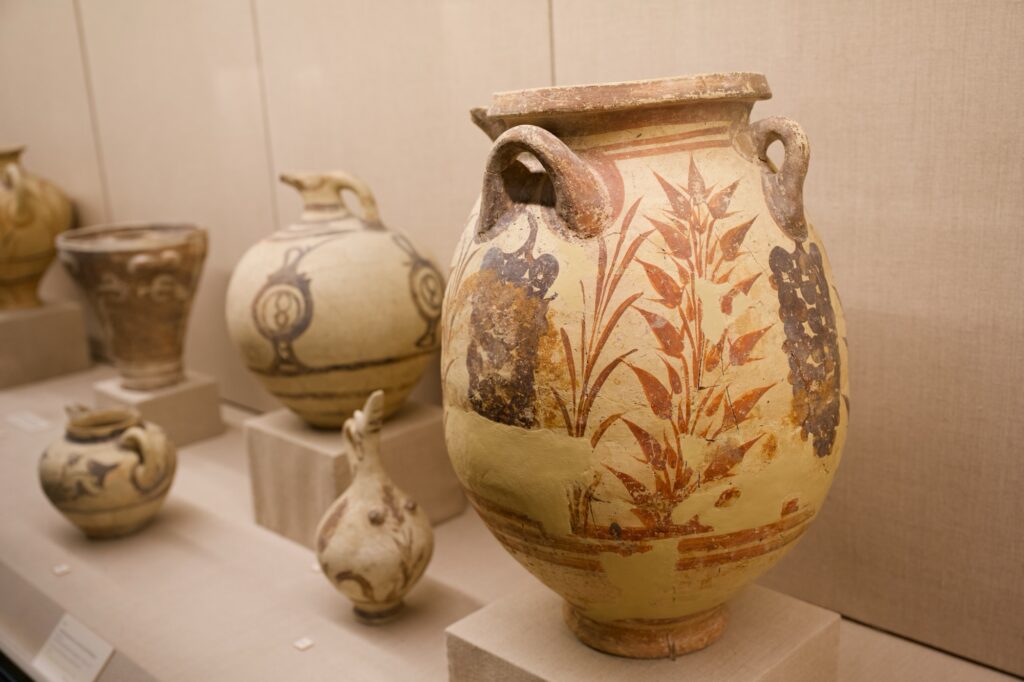

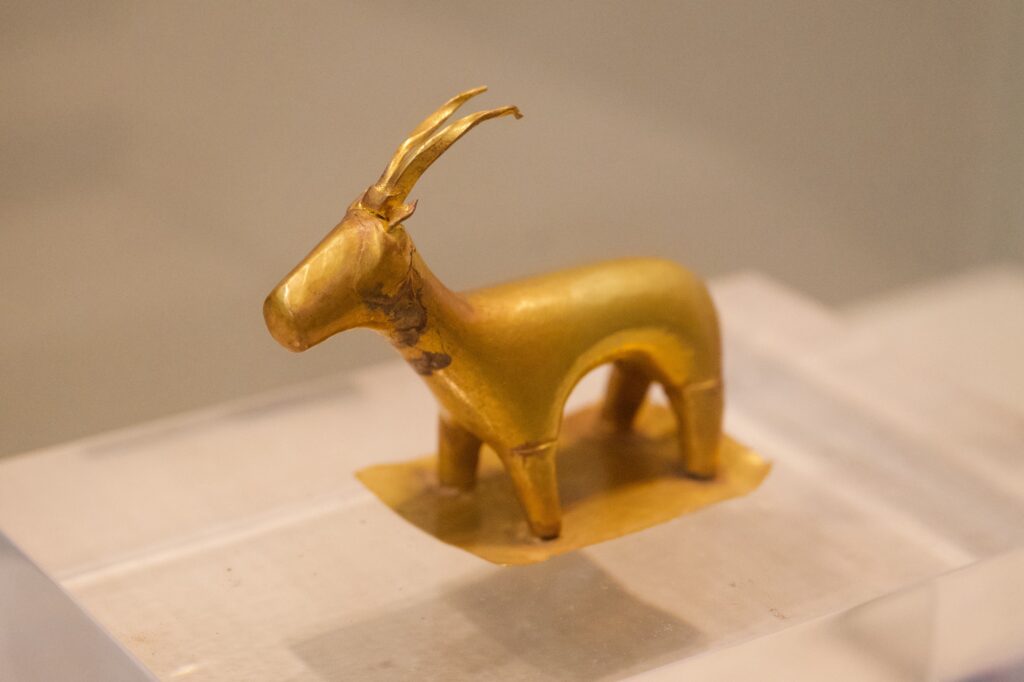
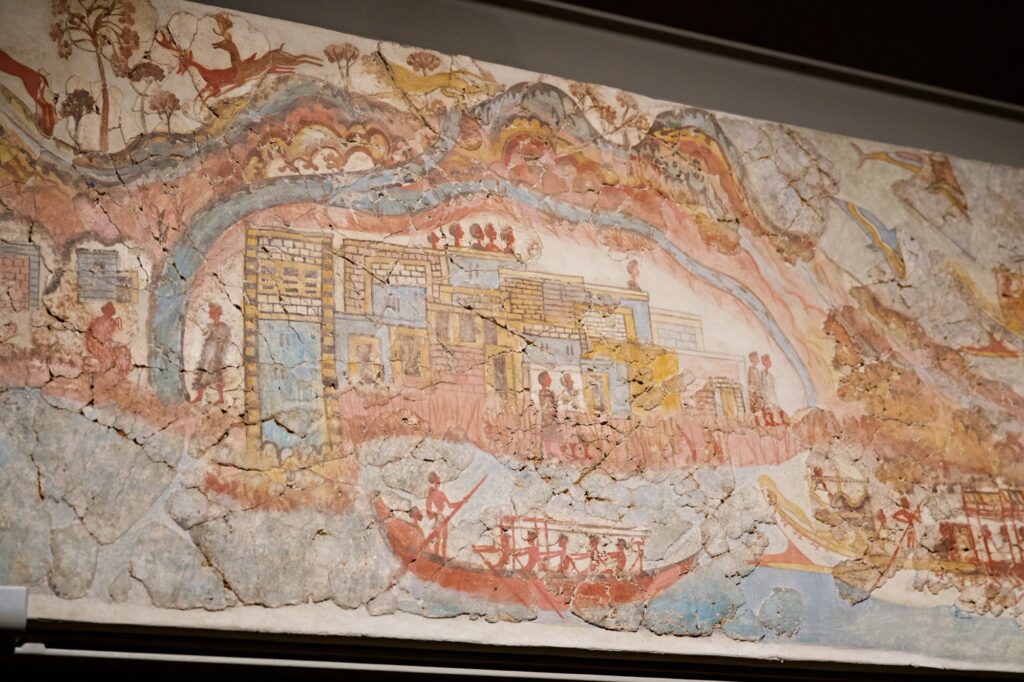
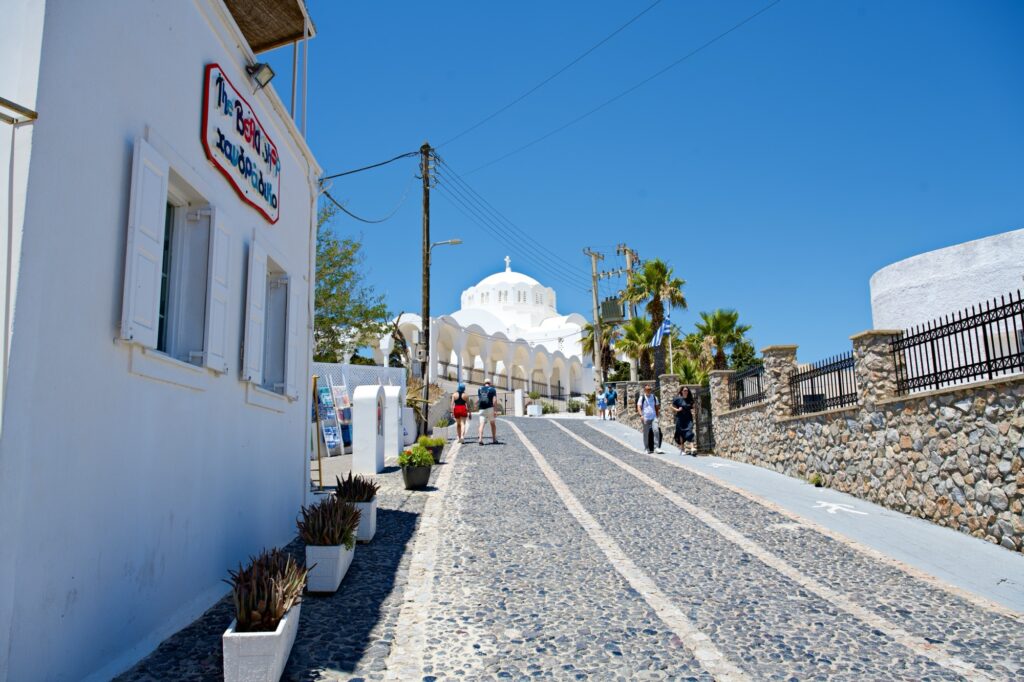
After leaving the museum, we had a some free time, so the girls did a little shopping nearby while I walked around town and took pictures.
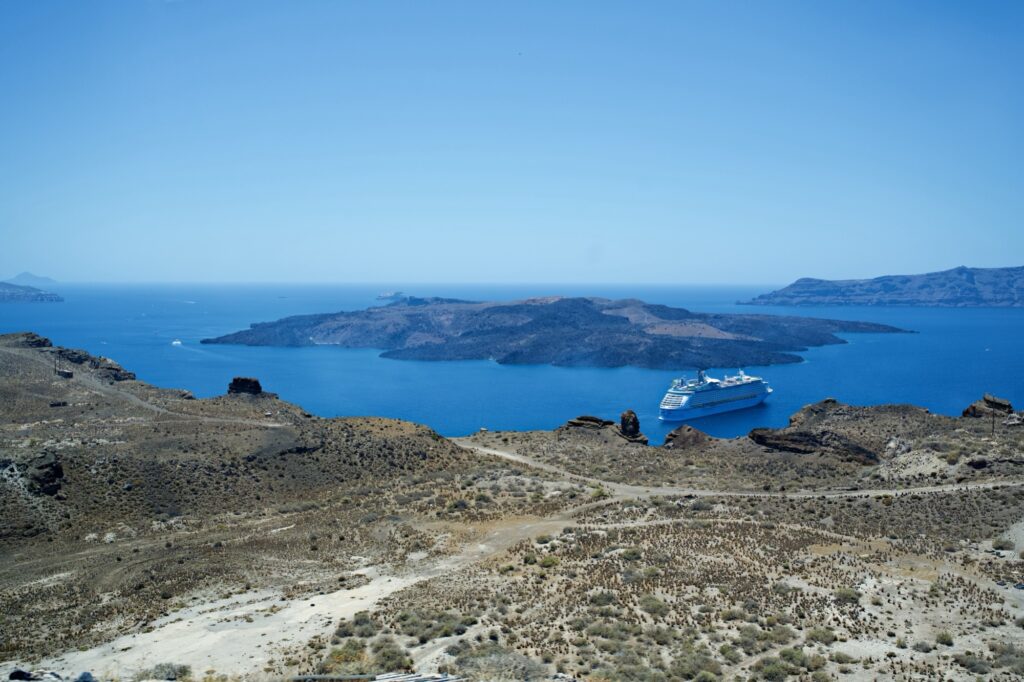
Later, we all met at the bus for our ride back to the Athenios port.
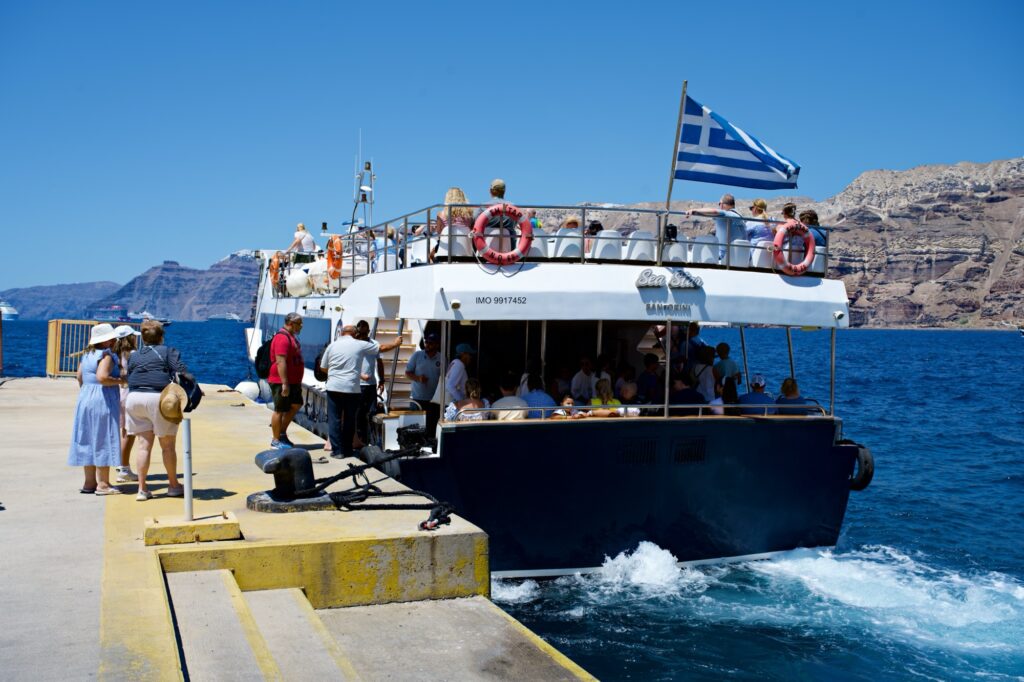
Once we arrived, and said goodbye to Georgina, we boarded another tender ship for our ride across the caldera back to the Voyager of the Seas.
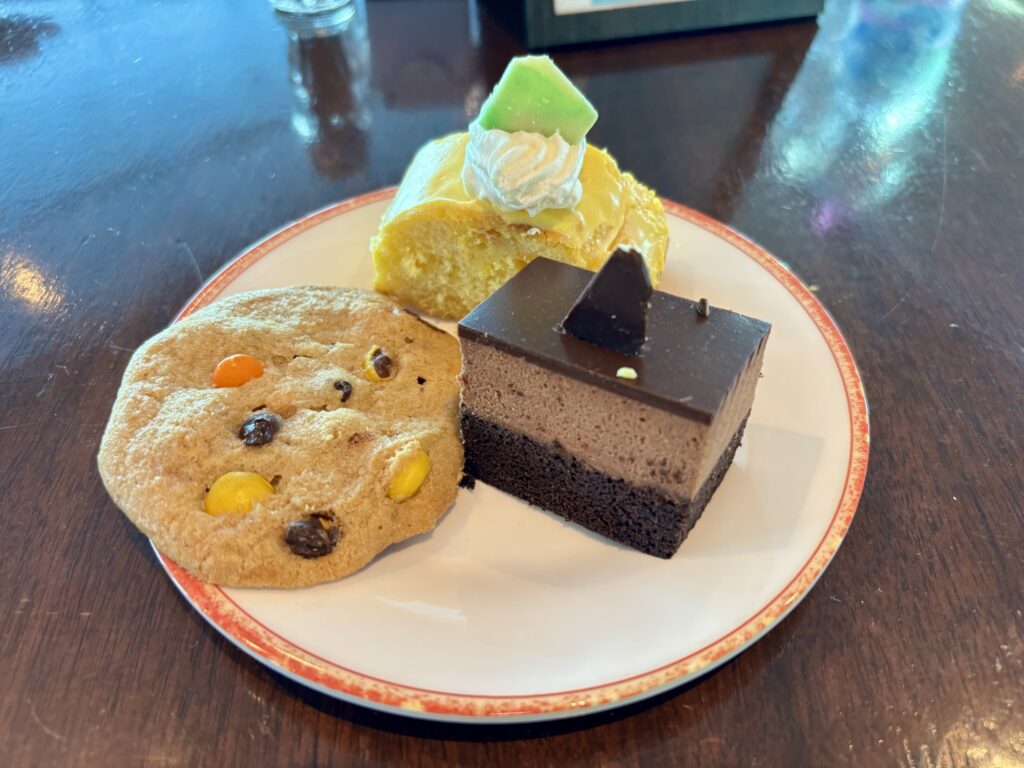
Once we were back onboard, we went up to deck 11 for some snacks. Sara and I had soft serve ice cream and then met Olivia and Kate in the Windjammer.
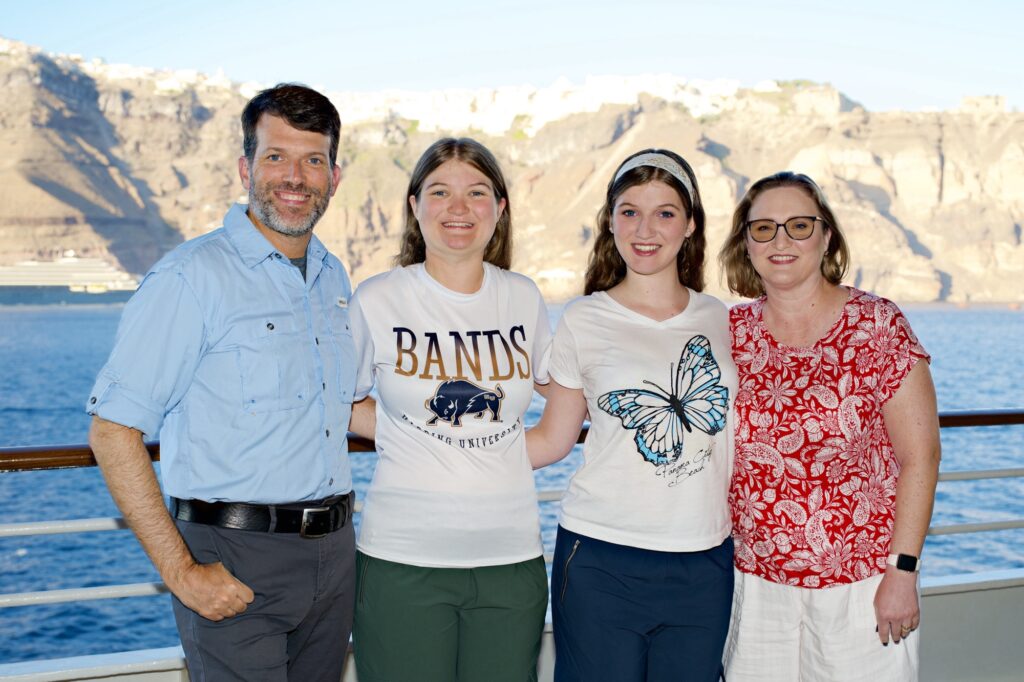
After snacks, we got cleaned up and rested for a little while in our stateroom. Then we headed down to the promenade deck to snap some family pictures in front of the cliffs of Fira before dinner.
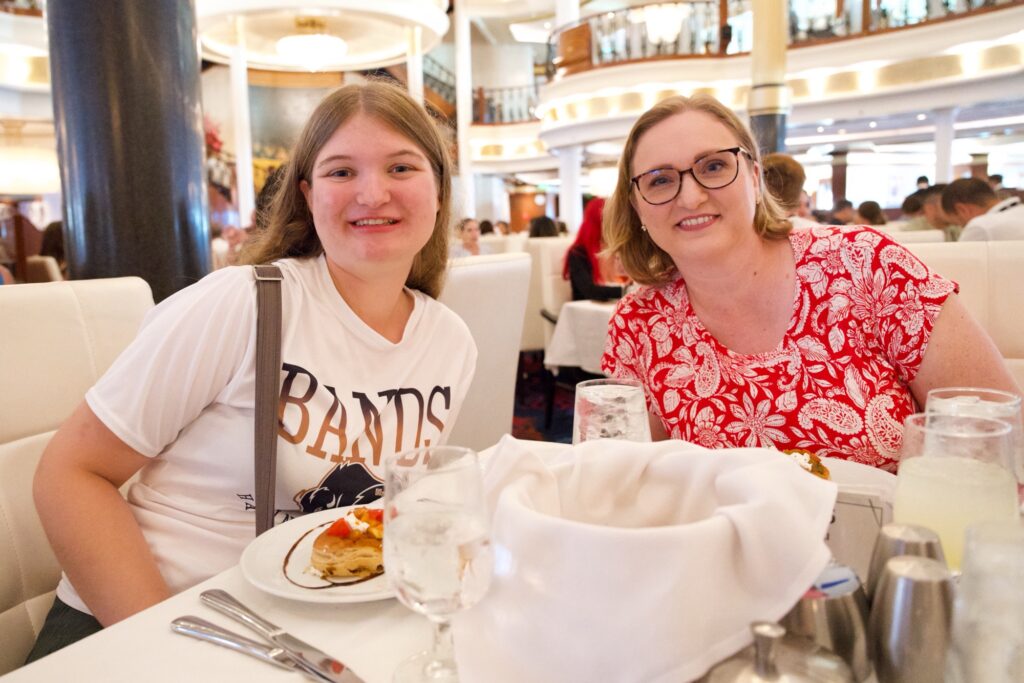
Dinner was again in the Main Dining Room with Amri from Indonesia and Sana from Gambia as our waiters. They are awesome, and interesting to talk to.
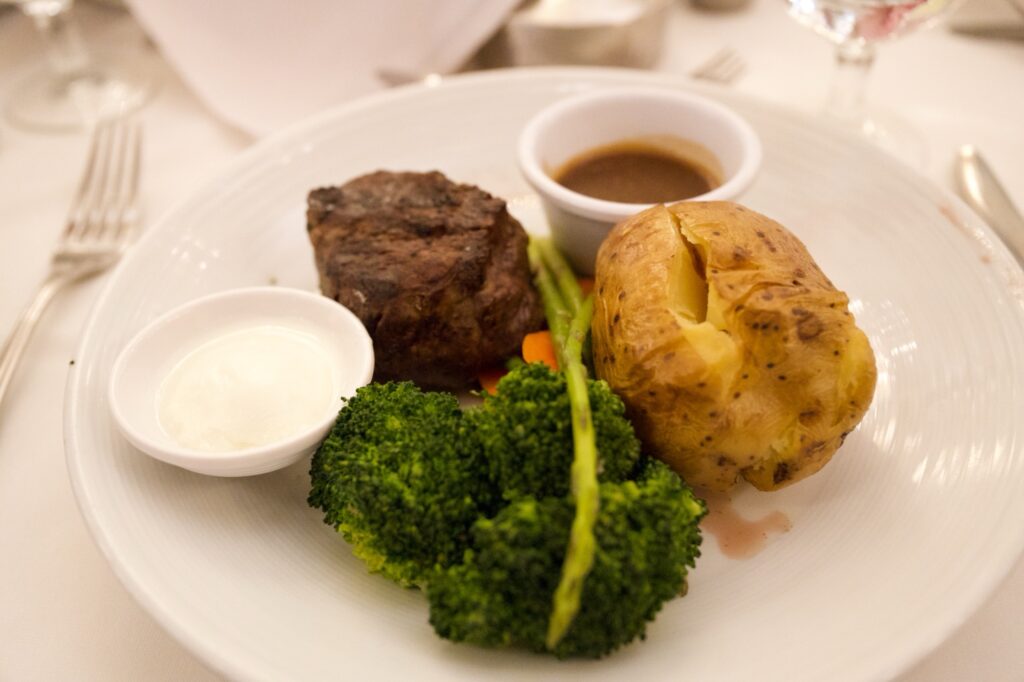
Tonight was UK night, but I decided to upgrade to the Chops Filet Mignon. I also had escargot as an appetizer and sticky toffee pudding for dessert. It was another wonderful meal.

After dinner we went to the Odyssey ice show in Studio B on deck three. It was impressive show, especially considering that we are on a moving ship.
From there we turned in for the night to rest up for a big day in Turkey tomorrow.
